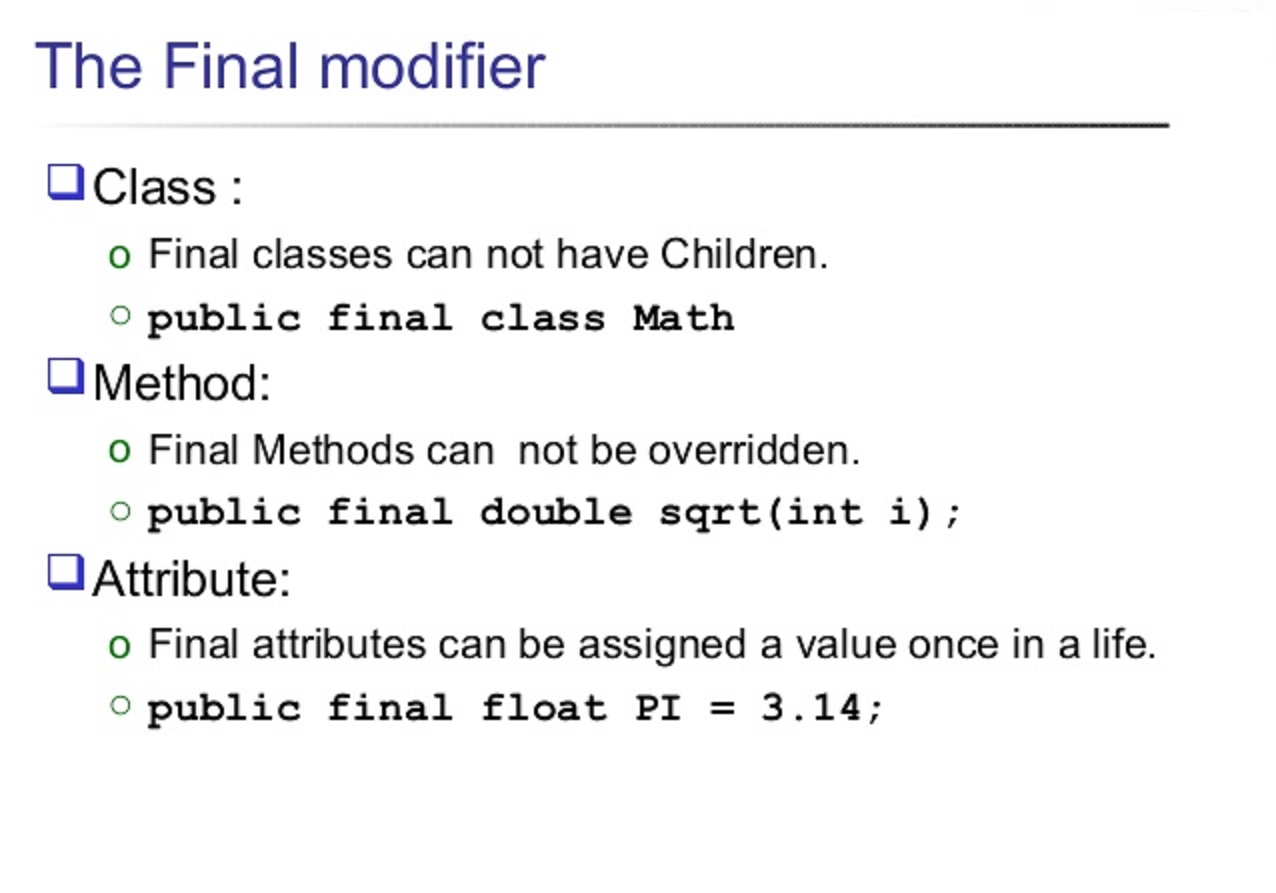
This can cause many headfakes and pull-out-your-hair kind of bugs. Without strict mode, a reference to a this value of null or undefined is automatically coerced to the global.

In strict mode, attempting to do so throws an error. This is one of the most common errors in JavaScript. Without strict mode, assigning a value to an undeclared variable automatically creates a global variable with that name.
#JAVA INTERVIEW QUESTIONS FOR TESTERS CODE#
Code errors that would otherwise have been ignored or would have failed silently will now generate errors or throw exceptions, alerting you sooner to problems in your code and directing you more quickly to their source. Some of the key benefits of strict mode include: Code errors that would otherwise have been ignored or would have failed silently will now generate errors or throw exceptions. The short and most important answer here is that use strict is a way to voluntarily enforce stricter parsing and error handling on your JavaScript code at runtime.

(Yet another prime example of why you should use use strict as a matter of course in your code!) Note that, in strict mode (i.e., with use strict), the statement var a = b = 3 will generate a runtime error of ReferenceError: b is not defined, thereby avoiding any headfakes/bugs that might othewise result. The issue here is that most developers incorrectly understand the statement var a = b = 3 to be shorthand for: var b = 3 īut in fact, var a = b = 3 is actually shorthand for: b = 3 Īs a result (if you are not using strict mode), the output of the code snippet would be: a defined? falseīut how can b be defined outside of the scope of the enclosing function? Well, since the statement var a = b = 3 is shorthand for the statements b = 3 and var a = b, b ends up being a global variable (since it is not preceded by the var keyword) and is therefore still in scope even outside of the enclosing function. Since both a and b are defined within the enclosing scope of the function, and since the line they are on begins with the var keyword, most JavaScript developers would expect typeof a and typeof b to both be undefined in the above example. Or, if you’re using jQuery: console.log((bar != null) & (typeof bar = "object") & (! $.isArray(bar))) ĮS5 makes the array case quite simple, including its own null check: console.log(Array.isArray(bar)) However, there’s one other alternative that returns false for nulls, arrays, and functions, but true for objects: console.log((bar != null) & (bar.constructor = Object)) In most cases, this is the desired behavior, since arrays are indeed objects, but in situations where you want to also false for arrays, you could amend the above solution to be: console.log((bar != null) & (typeof bar = "object") & (toString.call(bar) != "")) Second, the above solution will return true if bar is an array (e.g., if var bar = ).

In most cases, this is the desired behavior, but in situations where you want to also return true for functions, you could amend the above solution to be: console.log((bar != null) & ((typeof bar = "object") || (typeof bar = "function"))) To be entirely thorough in our answer, there are two other things worth noting:įirst, the above solution will return false if bar is a function.

Therefore, the following code will, to the surprise of most developers, log true (not false) to the console: var bar = null Ĭonsole.log(typeof bar = "object") // logs true!Īs long as one is aware of this, the problem can easily be avoided by also checking if bar is null: console.log((bar != null) & (typeof bar = "object")) // logs false Although typeof bar = "object" is a reliable way of checking if bar is an object, the surprising gotcha in JavaScript is that null is also considered an object!


 0 kommentar(er)
0 kommentar(er)
